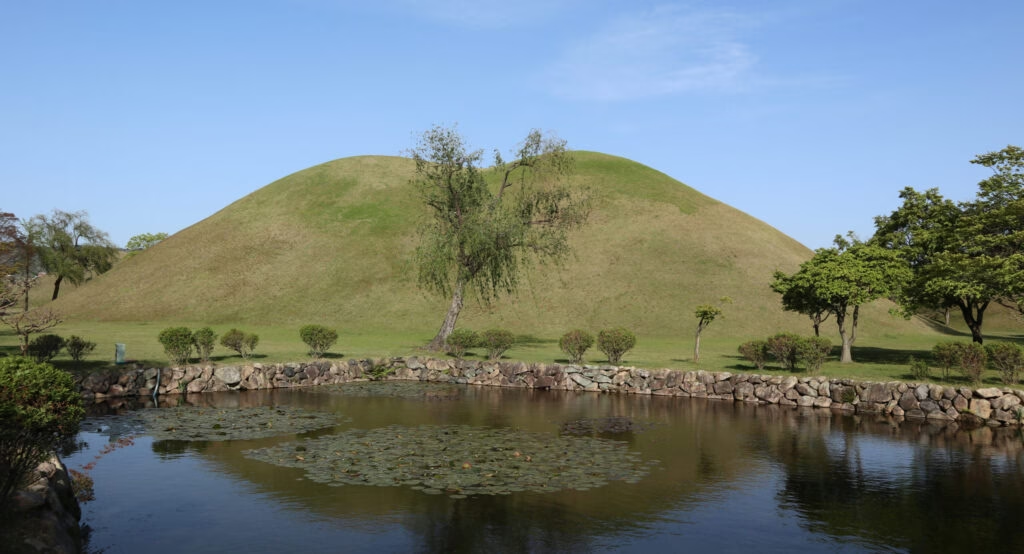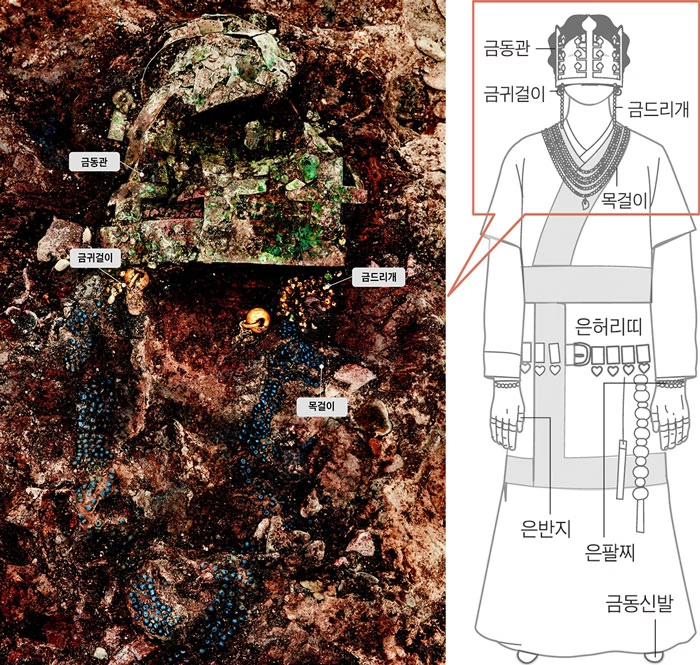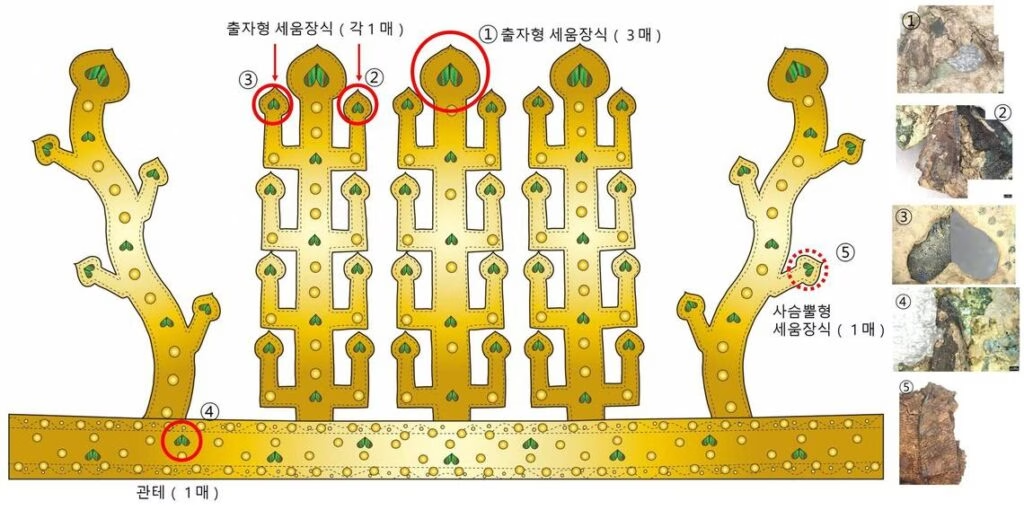In an extraordinary discovery that merges natural beauty with ancient royalty, archaeologists in South Korea have unearthed a 1,400-year-old royal crown from the Silla Kingdom — unlike anything found before. What makes this treasure stand out? It’s adorned with the iridescent wings of jewel beetles, showcasing both artistic innovation and elite status from Korea’s early history.
The Silla Kingdom: A Legacy of Gold and Power
The Silla Kingdom (57 BCE – 935 CE) was one of the Three Kingdoms of ancient Korea and the first to unify the peninsula. Renowned for its golden artifacts, Buddhist traditions, and diplomatic ties with Tang China, Silla was a beacon of culture and craftsmanship. Its capital, Gyeongju, known as “the museum without walls,” remains a UNESCO World Heritage site rich with archaeological wonders.

Tomb 120-2: A Snapshot of Royal Afterlife
The crown was discovered in Tomb 120-2 in Gyeongju, resting atop the skull of a high-ranking figure. The excavation revealed not just a crown, but a full set of ornate funerary items:
- Heavy gold earrings with wide hoops
- A deep blue beaded chest ornament
- A silver belt with matching bracelets and rings
- Over 500 tiny yellow beads forming a delicate bracelet
- Gilt-bronze shoes designed specifically for burial rituals
Everything was found in its original position, offering a rare, undisturbed view of royal attire at the moment of burial.
Jewel Beetle Wings: Nature’s Iridescent Gem
The most captivating feature? The crown’s vertical gold extensions — shaped like branches and antlers — were pierced with heart-shaped holes, many of which still contain fragments of jewel beetle wings. These natural materials were used like gemstones, refracting vivid green and blue hues, and symbolizing beauty, rarity, and divine favor in ancient cultures.

This is the first documented case of jewel beetle wings being used to decorate a Silla crown, making this artifact truly one-of-a-kind.
Spiritual Power Meets Design Innovation
Hanging from the sides of the crown were pendant-like ornaments made of gold beads and curved jade pieces (known as gogok), which would have shimmered with every movement. These elements reflected the Silla belief in spiritual protection, status symbolism, and a connection to the heavens.
Another mysterious component of the crown is a perforated metal plate placed between the band and vertical ornaments — a detail never before seen. Was it a form of structural support, or purely decorative? Archaeologists are still investigating.
Who Was Buried Here?
Based on the distance between the crown and the heels of the shoes, the individual is estimated to have been around 170 cm (5’7”) tall — relatively tall for the era. While the identity remains unknown, ongoing DNA and isotopic analyses may provide insight into their gender, lineage, and social standing.

Why This Discovery Matters
This crown is not just a beautiful artifact — it’s a window into Korea’s rich past. It confirms the advanced artistry of the Silla civilization and reinforces Gyeongju’s reputation as one of the most archaeologically significant sites in Asia.
For historians, this find raises new questions about burial rituals, material symbolism, and cross-cultural exchanges in early Korea. For the public, it offers a breathtaking example of how nature and royalty once coexisted in harmony.
Cover Image Credit: Public Domain





